Master Hot Tub Pump Maintenance: Keep Your Spa Flowing Smoothly
June 04th, 2024
June 04th, 2024
A hot tub, that oasis of relaxation nestled in your backyard, promises warmth and tranquility after a long day. Yet, behind those soothing jets of water lies the true heart of the spa experience: the hot tub pump. This essential component moves water through the system, ensuring that your soak is both invigorating and clean. Without it, your hot tub is merely a large, stagnant basin.
I remember the first time I truly appreciated the importance of a functional pump. One chilly autumn evening, eager for some therapeutic warmth, I discovered my hot tub had become a tepid, lifeless puddle. It was then I realized the pump was more than just another mechanical part; it was the pulse of my personal sanctuary.
Understanding the workings of hot tub pumps can transform your maintenance approach from daunting to manageable. Far more than just a motor and impeller, these pumps have evolved to offer varied speeds, energy-efficient models, and even silent operation. Whether you’re a new hot tub owner or a seasoned enthusiast, knowing the nuances of your pump optimizes not only performance but also longevity.
In this guide, we will explore the diverse types of pumps, their maintenance needs, potential issues, and how to troubleshoot them. By the end, you’ll possess the knowledge to ensure your hot tub remains the perfect retreat, always ready to whisk you away on a cloud of steam and serenity.
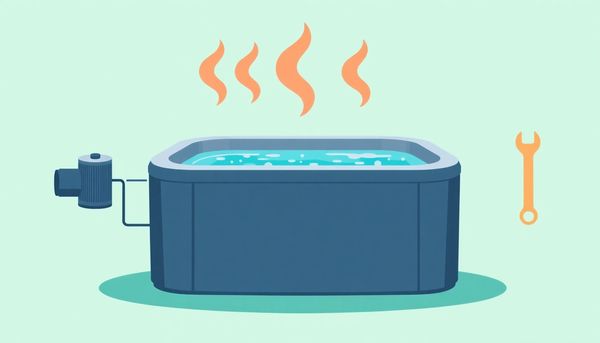
When the soothing promise of your hot tub meets an eerie screech or stubborn silence, it's time to heed the warning signs. Much like a car engine, a hot tub pump thrives on harmony between its moving parts. Early detection of issues can save you from costly repairs and downtime. I remember my first encounter with a faulty pump—it was a rare quiet evening when an unsettling grinding noise echoed from the spa. A quick investigation revealed a clogged impeller, a simple problem that could have escalated had it gone unnoticed.
Pay attention to unusual sounds and changes in water flow. A soft hum is music to your ears, but clanks or groans indicate trouble. Uneven jet pressure or a stalled motor can point to blockages or electrical faults. Regularly inspecting your pump's components, like the impeller and motor, can prevent these nuisances. Use a flashlight to peer into the cabinet and check for leaks or moisture—hidden culprits that often spell doom for electrical systems.
Moreover, don't underestimate the power of routine maintenance. Clean your filters and leaf traps diligently, and keep an eye on the water chemistry. A stitch in time saves nine, and in the world of hot tubs, foresight is your best ally. By catching problems early, you ensure that your tub remains a sanctuary of relaxation, not a source of frustration.
A symphony of jets should welcome you as you turn on your hot tub, but instead, an unsettling screech or, worse, silence greets you. This is when knowing the early warning signs of a failing pump becomes invaluable. The screeching sound? Often, it signals worn-out bearings or a motor on its last legs. If the jets seem to have lost their vigor, or worse, stand lifeless, your pump might be battling internal blockages or a failing impeller.
Start by listening to your hot tub; it often tells stories through unusual noises. Grinding, thumping, or whining sounds can all indicate mechanical distress. Next, take a moment to observe the flow. Is the water pressure consistent? Slow jets or sporadic bursts might hint at blockages or airlocks within the system. Sometimes, even a faint smell of burning can point to electrical issues, demanding immediate attention to prevent further damage.
Vigilance in spotting these signs can save you from a costly replacement. Regular checks, like inspecting for leaks around the pump seals or ensuring connections remain tight, help maintain peak performance. A personal tip? Keep a maintenance log. Jot down any odd behaviors or sounds; these notes can guide you or a technician in diagnosing issues faster. With a keen eye and ear for these early signs, your hot tub can remain an oasis of relaxation rather than a source of frustration.
A hot tub pump can sometimes be a mysterious beast, humming contentedly one day and sputtering the next. The challenge lies not only in identifying the issue but also in addressing it effectively. Consider the moment you flip the switch, expecting a powerful rush of water, only to be greeted by a disconcerting silence. This could indicate an electrical problem, such as a tripped breaker or faulty wiring. In such cases, start by inspecting your power supply. A multimeter can be invaluable for checking if the current is reaching the motor, revealing if a deeper electrical issue is at play.
Unusual noises, like screeching or grinding, can signal mechanical troubles. A stuck impeller is a usual suspect here, often due to debris or residue build-up. To rectify this, ensure the power is off, then carefully clean the impeller, removing any obstructions. Sometimes, dismantling the pump to inspect its components is necessary, especially if the issue persists. Remember, a damaged impeller may need replacement to restore functionality.
Water leakage is another concern, potentially leading to severe damage if neglected. Regularly inspect the seals and connections for any signs of wear or moisture. If a leak is detected, act swiftly to replace faulty seals or tighten connections, thus preventing further complications. By staying vigilant and addressing these issues promptly, you can maintain your pump's performance and extend its lifespan, ensuring your hot tub remains a sanctuary of relaxation.
When you own a hot tub, keeping the pump in top shape isn't just a suggestion—it's a necessity. One evening, after a long day, you might eagerly step into your spa only to hear that dreaded screeching noise, or worse, find it completely unresponsive. These hiccups can often be avoided with a bit of care and attention.
Regularly inspecting your pump is akin to checking your car's oil; it's a small effort with significant benefits. First off, familiarize yourself with its specifications. A glance at the pump's label will reveal critical information like horsepower and RPM, guiding you in understanding its capabilities. Regular cleaning is also essential. Leaves, hair, or dirt can easily clog the system, so make it a habit to clear the leaf trap and filters.
Moreover, pay attention to the pump's sounds and vibrations. A well-functioning pump hums quietly—any deviation might signal trouble. Don’t ignore minor issues, as they can snowball into costly repairs. If your pump does show signs of wear, like frequent tripping of the breaker, it might be time to consult a professional or consider a replacement.
Finally, remember that moisture is an enemy. Check for leaks and ensure the housing around your pump remains dry. By nurturing your pump with these practices, you'll extend its life and enjoy uninterrupted relaxation in your spa.
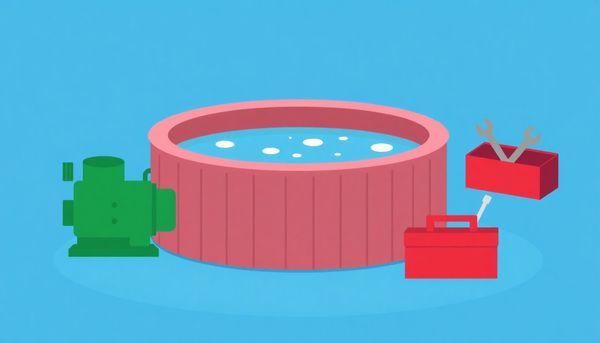
Choosing the right replacement pump for your hot tub isn't just about swapping out the old for the new—it's about understanding what will keep your spa humming effortlessly. Enter the world of hot tub pumps, where horsepower, RPMs, and voltage form the language of relaxation. Imagine you’re at a store, standing in front of a shelf full of pumps. Each one has a sticker plastered on it, shouting out numbers and symbols. They look intimidating, but there's a method to the madness.
Begin with horsepower. This determines how powerful your new pump will be. A pump that’s too powerful might wreak havoc on your plumbing, while one that’s too weak won’t give you those blissful jet streams. If your old pump was 2 HP, stick close to that number unless you're planning a major plumbing overhaul. Next, check the voltage. Is your current setup 110–120 volts or 220–240 volts? Match these numbers precisely to avoid electrical mishaps.
Also, keep an eye on the frame size—48 or 56. A mismatch here means your pump won't fit securely into your spa’s cabinet. Examine the discharge orientation and fittings, too. Some brands boast unique connectors, which can be a blessing or a curse depending on compatibility.
With these details in hand, the puzzle pieces start to fit together. Your new pump will not only match your hot tub’s technical needs but also its physical setup, ensuring seamless integration. Armed with knowledge, you’re ready to make an informed choice and keep your spa experience uninterrupted and enjoyable.
When faced with odd noises or disheartening silence from a hot tub, understanding pump specifications becomes a crucial task. Imagine hosting a backyard gathering with friends only to discover your spa is lifeless. To prevent such scenarios, it's essential to become familiar with the various specifications etched into your hot tub pump's label. These details, such as horsepower (HP) and speed variations, are more than mere numbers; they ensure your pump functions optimally, matching the capacity of your spa’s plumbing and energy setup.
Each hot tub is designed to operate with the right blend of pump power and efficiency. The horsepower of your pump, for instance, dictates how robustly your jets perform. Oversize the horsepower without the right plumbing, and you might be in for a leaky mess. Flip the pump, and you'll find the discharge orientation, revealing whether your setup requires a top or side discharge. This nifty adjustment can prevent future installation headaches.
Additionally, voltage requirements (110-120 volts or 220-240 volts) are crucial—misjudging them can lead to blown circuits or worse. By recognizing the wire colors—green and white for lower voltage, with black and red added for higher—you save yourself from potential electrical mishaps. Understanding these specifications doesn’t just keep your spa running; it empowers you to tackle issues like a seasoned pro, ensuring your gatherings remain delightful, warm-water retreats.
Understanding the voltage requirements for your hot tub pump is akin to ensuring your smartphone has the right charger—overlook it, and nothing works right. First, determine whether your pump needs 110–120 volts or 220–240 volts. This is crucial because each voltage category caters to different levels of performance and efficiency. A pump designed for 220–240 volts typically offers more power, suitable for larger hot tubs with numerous jets, whereas a 110–120 volt pump might suffice for smaller, less demanding systems.
Imagine having a pump designed for a lower voltage mistakenly connected to a higher one. It’s like trying to run a marathon in flip-flops—disastrous and unsustainable. To identify the correct voltage, inspect the wiring. Pumps wired with two wires—usually green and white—are designed for 110–120 volts. Meanwhile, four-wire setups (green, white, black, and red) indicate a 220–240 volt system.
It’s not just about avoiding malfunctions; proper voltage alignment ensures the longevity of your equipment. Using a pump with the incorrect voltage can lead to overheating or insufficient jet power, disrupting your relaxation ritual. If in doubt, consult the pump’s label for voltage details or seek professional advice.
Additionally, when replacing your pump, hold onto the old power cord if it’s still in working order. It’s like keeping an old reliable friend around—handy in unexpected situations.
In the realm of hot tub maintenance, discharge orientation often takes a backseat, yet its role is crucial in ensuring your pump fits seamlessly into your spa's system. Take a moment to examine your hot tub pump and you'll notice the discharge port, where water exits the pump. It can be oriented on top (center discharge) or on the side (side discharge). This positioning dictates how well your system will function and whether it aligns with your spa's plumbing configuration.
When I first tackled my own hot tub pump replacement, I overlooked this tiny detail and ended up with a misfit. It was a headache I'd rather not repeat, and a lesson learned the hard way. Ensuring the discharge orientation matches your spa’s existing setup will save you time and frustration.
Some pump brands, however, have a quirk—non-universal fittings. If your new pump falls into this category, you’ll need to replace the unions during installation to secure a snug fit. This might sound daunting, but with a little patience, it's manageable. Remember, securing the right fit is more than just aesthetics; it ensures efficient water flow and prolongs the life of your equipment.
Ultimately, being mindful of discharge orientation not only aids in smooth installation but also enhances performance. A small step like checking this specification can make a significant difference, keeping your spa experience blissfully uninterrupted.
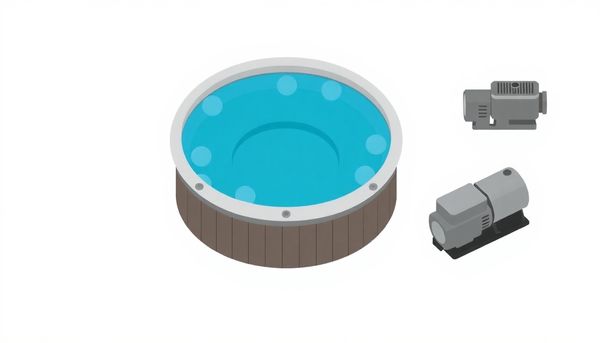
The heart of any hot tub setup, the pump, deserves regular attention to maintain its peak performance. Disruptions in water flow or strange noises aren’t just inconvenient—they signal underlying issues that can escalate if left unchecked. A vigilant eye for detail can be the difference between a serene soak and an afternoon of wrench-wielding.
Consider my neighbor, who faced a sluggish jet output. He discovered that a simple impeller cleaning restored his hot tub’s vigor. This highlights the importance of regular maintenance, such as routinely checking for debris build-up, which can impede flow. Equally crucial is ensuring that your pump's specifications match your hot tub’s requirements. Mismatched horsepower and plumbing can not only reduce efficiency but also risk damaging the equipment.
To keep your pump running smoothly, start with a basic routine: clean filters regularly, check for leaks, and inspect for worn parts. A pump that’s frequently powered on and off due to electrical issues may need a wiring inspection—sometimes corrosion or loose connections are culprits. For those comfortable with DIY repairs, using a multimeter to test electrical inputs can prevent unnecessary downtime.
While technology has blessed us with self-priming pumps, a manual primer might occasionally be necessary to expel trapped air. By staying proactive with these maintenance tips, you’ll extend the life of your hot tub pump and ensure that your spa remains your personal oasis.
You press the button to start your luxurious soak, only to be met with an eerie silence or, worse, a disturbing screech. Recognizing these early signals is crucial in preventing minor annoyances from becoming costly repairs. When your hot tub jets are sputtering or your pump is silent, it's often a cry for help from your spa’s intricate system.
Listening closely to your pump's daily performance is one of the first lines of defense. A steady hum indicates all is well, whereas inconsistent sounds can signal air in the lines or debris clogging the filters. Occasionally, give your hot tub a quick visual inspection. Dampness or visible rust near the pump might point to leaks, which can silently wreak havoc on electrical components if not addressed promptly.
I once ignored a low hum, assuming it was nothing more than the symphony of normal wear. Months later, I faced a hefty bill to replace a fried motor that had been quietly damaged by a slow leak. Such experiences teach the value of preventative care.
In addition to auditory and visual checks, pay attention to the water flow. Weak jets or irregular water pressure often hint at a blocked impeller or trapped air. By addressing these issues early, you not only extend the lifespan of your pump but also ensure every soak remains a blissful escape.
Selecting the right pump specifications for your hot tub can feel a bit like matchmaking—finding the perfect fit is crucial for harmony. When I upgraded my own hot tub, I realized that deciphering those pump labels was akin to learning a new language. Let's break it down.
First, consider the horsepower (HP). Your pump’s horsepower needs to align with your spa’s plumbing. It’s tempting to go big—who wouldn’t want the most powerful jets on the block? However, too much horsepower can stress your system, leading to leaks or inefficiencies. Spa pumps range from ¾ HP to 5 HP, but striking the right balance is essential.
Next, decide on the pump speed. Many tubs use variable-speed or two-speed pumps, offering flexibility between a gentle soak and an invigorating massage. However, if yours has a separate circulation pump, you might manage with a single-speed jet pump, reducing energy consumption without sacrificing performance.
Voltage is another key aspect. Most pumps require either 110–120 volts or 220–240 volts. This can usually be confirmed by a quick peek at the wiring or the pump’s label. Mismatched voltage can lead to operational hiccups, or worse, electrical hazards.
Finally, ensure the discharge orientation and frame size match your spa’s setup. Misaligned components can mean starting from scratch with costly modifications. My advice? Measure everything twice and jot down any peculiarities of your current setup before you shop for a new pump. A little preparation goes a long way in avoiding future headaches.
Picture this: your hot tub is more than just a warm water retreat; it's a symphony of moving parts, with the pump as its conductor. Neglect, even in small doses, can turn this harmonious performance into a discordant mess. It’s not just about the occasional cleaning—think of it as a relationship requiring regular attention and care.
Start by keeping the water chemistry balanced. When the water is too acidic or too alkaline, it doesn’t just irritate the skin—it also corrodes the pump’s components. Check the chemical levels regularly, akin to how you might monitor a cherished plant’s soil moisture to keep it thriving.
Mind the filters and leaf traps as well. A dirty filter is an invitation for debris buildup, straining the pump and potentially leading to clogs. Picture it like trying to sip a smoothie through a straw clogged with fruit chunks—frustrating and ineffective. Regular cleaning can prevent these blockages, ensuring your pump breathes easy.
Inspections are your best friend. Look for telltale signs of wear or leaks around the pump seals. A tiny drip today can become a costly repair tomorrow. Imagine spotting a small crack in your phone screen—quick action can prevent it from spiderwebbing across the entire display.
Ultimately, longevity is about consistency. Like an old friend who appreciates regular catch-ups, your pump rewards frequent maintenance. With mindful care, the pump ensures your hot tub remains a sanctuary, ready to soothe at the end of each day.
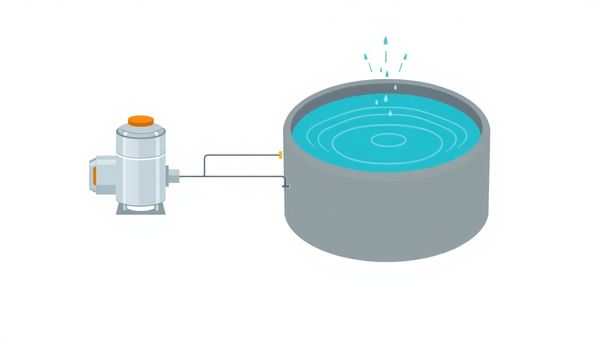
One evening, standing beside your hot tub with the gleam of anticipation in your eyes, you twist the knob to activate those blissful jets, only to be greeted by a disappointing trickle—or worse, silence. This scenario might be familiar to many, and it underscores the importance of preventing leaks in your hot tub pump system. Leaks can be sneaky, often going unnoticed until they become a serious issue. Fortunately, a little knowledge and regular maintenance can keep your pump in top shape, saving you from unexpected spa frustrations.
Begin by routinely inspecting the pump seals and connections for drips or dampness. Moisture around these areas is often an early sign of a leak. I recall a time when a seemingly small drop led to a significant pump overhaul because I ignored it for too long. A simple habit of shining a flashlight around the pump's housing can help catch these early warning signs. Additionally, regularly check for cracks in the pump housing or impeller. These are more common in regions where temperature fluctuations lead to freezing conditions, compromising the integrity of your hot tub's system.
Moreover, maintaining proper water chemistry is crucial. Imbalanced water can corrode seals and other internal components, leading to leaks. Consider integrating a routine check-up into your spa care regimen, like my friend who swears by his monthly inspection routine that keeps his pump leak-free. By catching issues early and addressing them, you ensure not only the longevity of your pump but also the continuous enjoyment of your hot tub oasis.
Now and then, a hot tub's tranquility is shattered by an unsettling noise—or worse, silence. Before the panic sets in, understanding your pump's specifications can be the saving grace in restoring relaxation. Knowing the details isn't just about numbers; it's the key to a harmonious soak.
Start by locating the label on the side of your pump. This little sticker is a goldmine of information, listing essentials like horsepower (HP) and speed capabilities. For instance, the horsepower indicates how robustly your pump can circulate water and power those invigorating jets. An oversized HP might seem tempting, but it can lead to plumbing issues or leaks if your spa isn’t designed to handle it.
Beyond horsepower, consider the pump's speed: is it single-speed or variable-speed? Variable-speed models can shift between high and low RPMs, offering both energy efficiency and forceful jet performance. Single-speed pumps, while less flexible, are sometimes paired with a separate circulation pump to manage water flow efficiently.
Pay attention to the discharge orientation—top or side—as this determines how your pump fits into your spa’s layout. Plus, voltage requirements (110-120V vs. 220-240V) are crucial to prevent electrical mishaps. Fortunately, these are often marked on the pump's label or evident from the wiring setup.
By getting acquainted with these specifications, you equip yourself with knowledge to maintain or replace your pump correctly, ensuring your spa remains a sanctuary of bubbles and bliss.
In the intricate dance of maintaining your hot tub, one often overlooked element is keeping moisture at bay. Moisture can be a silent saboteur, creeping in when least expected, and wreaking havoc on your pump's motor. Picture your pump's motor as a fortress; its defenses against moisture can be surprisingly fragile. Thus, vigilance in maintaining the dry end of your pump becomes paramount.
Consider a past experience with my own hot tub. A leaky seal went unnoticed, and water seeped into the motor housing, causing a costly repair. Since then, I've learned that regular checks around pump seals and connections can prevent these moisture invasions. A flashlight can be a handy tool—use it to scour the cabinet interior for any dampness that might signal a leak.
Another effective strategy involves ensuring that your spa cover fits snugly. This barrier isn’t just for heat retention; it’s also a crucial guard against rain or condensation sneaking in. When weather conditions are particularly humid, a dehumidifier in the spa area can serve as additional armor, warding off excess moisture.
Remember, tackling moisture issues isn’t just about reacting to visible leaks. Proactive maintenance, like replacing worn seals and keeping the spa environment dry, helps ensure your hot tub motor continues humming without hitches, safeguarding your relaxation haven.
Hot tub pumps, those unsung heroes of relaxation, have a knack for throwing a wrench in your plans just when you need them the most. Ever flipped the switch, only to be greeted by an unsettling screech or, worse, total silence? Recognizing these tell-tale signs early can save both time and money. A screeching sound often signals a dry run, where the pump isn’t adequately lubricated by water, leading to internal friction. On the other hand, if your jets are weak or non-existent, debris might be clogging the system, causing your once-inviting spa to turn into a lukewarm puddle.
Start by checking the pump's label; it holds crucial clues like horsepower and speed. A pump running at the wrong voltage can cause erratic behavior, just like trying to listen to a vinyl record on the wrong speed setting. Ensure your pump’s wiring matches the voltage requirements—mismatched settings can leave your pump powerless.
Debris is a common culprit in circulation woes. Cleaning the filter and leaf trap can often restore order. If you still hear gurgling, air might be trapped. Priming the pump or “burping” it by toggling the jets can release the air pocket. Persistent issues, such as random power loss, might indicate underlying electrical faults. Here, a multimeter can be a lifesaver, helping trace the issue to faulty wiring or a failing motor. If all else fails, replacing the pump may be your best bet. Embrace these troubleshooting steps as your toolkit, ensuring your hot tub remains a haven of tranquility.
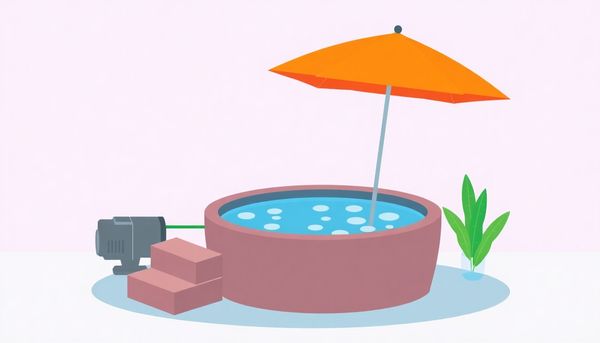
One moment you’re envisioning a peaceful soak in your hot tub, and the next, you’re greeted by an unsettling silence. No humming, no bubbling, just the quiet persisting like an uninvited guest. Troubleshooting electrical issues in your hot tub pump doesn't have to be daunting. Often, it's the simplest checks that unravel the mystery of a malfunctioning pump.
Start by ensuring your spa is receiving power. A tripped circuit breaker can be the spoiler of your spa plans. Check your electrical panel; if the breaker is tripped, reset it. Sometimes, the solution is that straightforward. Should it trip again immediately, you may be looking at a more elusive electrical gremlin, possibly within the wiring or the pump itself.
Next, focus on the control panel. If it displays an error code, consult your hot tub manual. Codes often provide clues to the root of the problem. If the panel is unresponsive, inspect the wiring for signs of corrosion or loose connections. Small tweaks, like tightening a connection, can often revive a dormant pump.
Should your hot tub still refuse to cooperate, an inspection of the motor might be necessary. Use a multimeter to check for consistent voltage supply. No power? No problem. Sometimes, the wiring might need a simple cleaning to remove corrosion, or a frayed wire might need replacing. If these steps don’t resolve the issue, it might be time to call in a professional. A little investigation goes a long way in ensuring your hot tub's heart beats steadily once more.
When you own a hot tub, the gentle hum of a well-functioning pump quickly becomes the background soundtrack to relaxation. However, there might come a time when things don't sound or feel quite right. Perhaps you flip the switch and hear an alarming screech rather than a soothing whir. Or maybe your jets awaken, but the water barely trickles through, leaving you high and dry. And then there's the worst-case scenario: silence. No hum, no water—just stillness.
Recognizing these issues early can save time and prevent costly repairs. A common culprit behind screeching noises is a motor bearing that's on its last legs. This often manifests as a high-pitched whine, signaling it's time to check for lubrication or consider a replacement. Meanwhile, if your jets seem to be blowing bubbles rather than creating a powerful stream, you might be dealing with an air lock or blockage in the impeller. This could require a thorough cleaning or priming of the pump.
Silence, the most ominous sign, could point to electrical issues. A tripped breaker or faulty wiring might be at play, necessitating a careful inspection or professional help. In all cases, understanding your pump’s specifications, such as voltage and horsepower, is crucial. Armed with this knowledge, you'll be better equipped to diagnose and address pump problems, ensuring that your spa experience remains a blissful escape rather than a troubleshooting ordeal.
The gentle hum of a hot tub pump is often the unsung hero behind your spa’s comforting embrace. It's not just about turning the pump on and off; it's about nurturing it to keep your spa flowing smoothly. To ensure your pump's longevity and peak performance, regular attention and care are essential.
Start by keeping your pump clean. Regularly inspect and clean the leaf trap and filters. When filters are left clogged, they strain the pump, causing inefficiency and potential damage. A clear filter means less resistance, allowing your pump to work effortlessly. Don’t forget to flush the lines occasionally to prevent any build-up that could affect the impeller.
Next, check the pump seals. Over time, these can wear down, leading to leaks. A simple flashlight inspection can help you spot any moisture that shouldn't be there. If you notice any drips or dampness, act promptly to seal up and prevent further damage.
Pay attention to the sounds your pump makes. Unusual noises like grinding or screeching might indicate an internal issue such as a jammed impeller or motor trouble. Early detection allows for minor adjustments rather than costly replacements.
Finally, balance your water chemistry diligently. Imbalanced water can be corrosive, leading to premature wear on your pump components. Regular testing and adjustments keep your spa ecosystem healthy.
By incorporating these simple practices, you’re not just maintaining a pump; you’re investing in countless hours of blissful soaking.
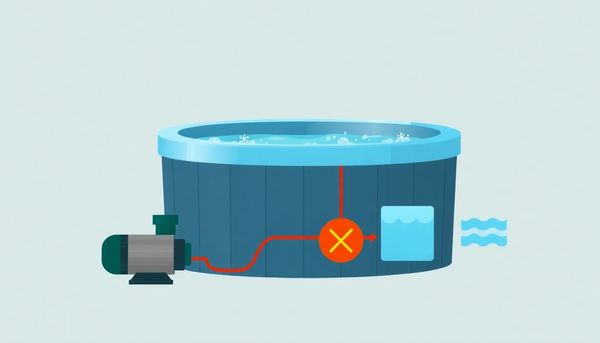
This article provided insights into maintaining your pool. Start your pool care journey today!
Want to become a pool maintenance expert? Our free Pool School course covers everything you need to know about pool care. From basic maintenance to advanced troubleshooting, you'll learn how to:
Join over 10,000 pool owners who have already transformed their pool care routine. Get started with our free Pool School course today!